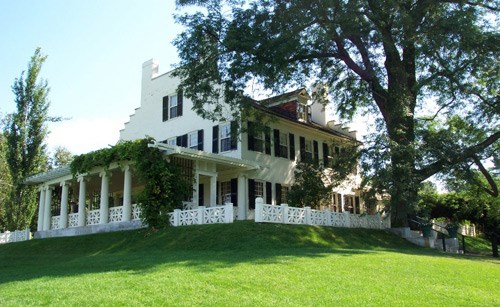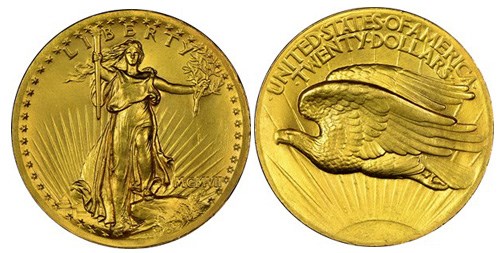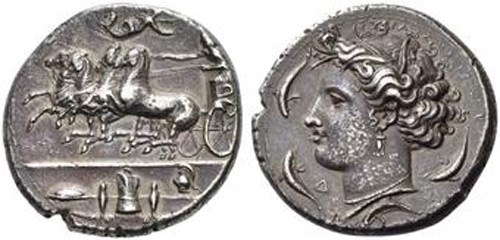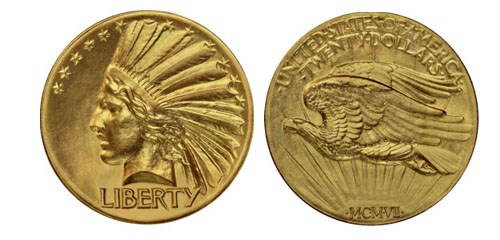Art and Numismatics
Posted on 9/22/2016
By
Jeff Garrett
Last week I had the pleasure of traveling with a friend to Cornish, New Hampshire on a very interesting numismatic road trip. Cornish, New Hampshire is an out of the way destination that is about 2.5 hours by car from Boston. The trip is well worth the effort. Cornish is the location of the Saint-Gaudens National Historic Site. Saint-Gaudens' home is now a part of the National Park Service and features over 100 of his artworks in galleries and on the grounds.

Saint-Gaudens' home is called Aspet and is a museum that has been restored to its original appearance in 1907, the year of his death. Examples of many of Saint-Gaudens' most famous sculptures can be seen on the grounds in beautiful, contemplative settings. Visiting this historical site gives you a deep appreciation for the talent of one our most important ever coin designers. The Saint-Gaudens National Historic Site should be on everyone’s numismatic bucket list!
1907 High Relief Double Eagle
Although Augustus Saint-Gaudens was known as one of the greatest artists of the late 19th century, his fame was cemented in the minds of coin collectors with his gold coin creations in 1907.
 |
|
| 1907 High Relief Double Eagle |
|
The following is from my book, 100 Greatest United States Coins:
The MCMVII (1907) High Relief Double Eagle is a masterpiece of the United States series. The coin has a distinct, sculpted appearance. Nearly all collectors consider it one of the most beautiful coins ever produced. This coin is the circulation version of the MCMVII (1907) Ultra High Relief. Theodore Roosevelt personally requested Augustus Saint-Gaudens (a prominent American sculptor of the era) to design new ten-dollar and twenty-dollar coins. Roosevelt considered the coin designs at the time to be unattractive and without artistic merit. After Saint-Gauden’s death in 1907, Mint Engraver Charles E. Barber was ordered to begin striking the High Relief double eagles. President Roosevelt even exclaimed, “Begin the new issue even if it takes you all day to strike one piece.”
Although the high relief design was fabulous from an artistic standpoint, it was impractical for commercial uses. Bankers complained that the coins would not stack properly, and the high relief design required at least three to five blows from the minting press. The Roman numerals were also too confusing for the American public. Later, in 1907, the relief was dramatically lowered and the Roman numerals replaced with Arabic numerals.
There are two distinct varieties of the 1907 High Relief issues: the Wire Rim and Flat Rim. These varieties were not created on purpose, but were the result of different collars used in the minting process. Loose collars resulted in extra metal being forced between the collar and the dies, resulting in a thin wire rim. On some coins, the wire rim is seen on only one side. The Flat Rim coins are considered to be slightly scarcer, but the Wire Rim and Flat Rim varieties are valued about equally in today’s markets.
The 1907 High Relief Double Eagle is one of the most popular and desirable coins ever produced by the United States Mint. The High Relief is not an extremely rare coin, but it has for decades been one of the most sought-after United States gold coins. The beauty of the sculptural design elevates the issue to the level of “fine art.” If most collectors could own only one coin, this would probably be the one.
Syracuse Tetradrachm 412-345 B.C.
Although Saint-Gaudens created what is now considered the ultimate in numismatic art, he was certainly not the first person to design beautiful coins. Theodore Roosevelt and Augustus Saint-Gaudens were heavily influenced by Greek art and coinage. There are several examples of Greek art to be found on the grounds of Aspet. Greek coinage has many examples of incredibly beautiful issues, but none are as famous as the silver Tetradrachms of Syracuse. There are several versions of this coin, and some can be found with the signature of the engraver, Kimon and are considered the most desirable.
 |
|
| Syracusan Tetradrachm 412-345 B.C |
|
For years many numismatic writers have touted the fact that rare coins sell for prices far below that of great art. We have all seen the auction reports of paintings or sculptures that have sold for over $100,000,000. Rare coins have topped the $10,000,000 mark, but that has only been in the last few years. Perhaps in the future more collectors will see that many rare coins have rarity and a great story, but are also beautiful works of art. I have only touched on two examples, but since the inception of coinage around 600 B.C. there has been hundreds of coins produced that can be considered fine art. As with paintings and sculptures, there are many different styles and techniques that can be found. Buying art is a personal decision and you are urged to explore numismatics to discover art that means something to you.
 |
|
| 1907 Indian Head Double Eagle Pattern |
|
My personal favorite coin from an artistic standpoint is the 1907 Indian Double Eagle pattern created by Augustus Saint-Gaudens. Many other serious coin collectors feel the same way. The coin is unique and has been off the market since the early 1980s. Interestingly, last week I was able to see the original plaster cast of this coin and many other designs proposed by Saint-Gaudens. I have been involved in numismatics for over 40 years, and it is hard to describe the thrill of handling such important numismatic artifacts.
Collecting coins based on art is an endless journey and one that should give you a different perspective of the hobby. Whether you collect ancient Greek coins or the newest issue from the United States Mint, your appreciation of rare coins is sure to be enhanced.
Questions about the rare coin market? Send them to wmr@ngccoin.com.
Stay Informed
Want news like this delivered to your inbox once a month? Subscribe to the free NGC eNewsletter today!
